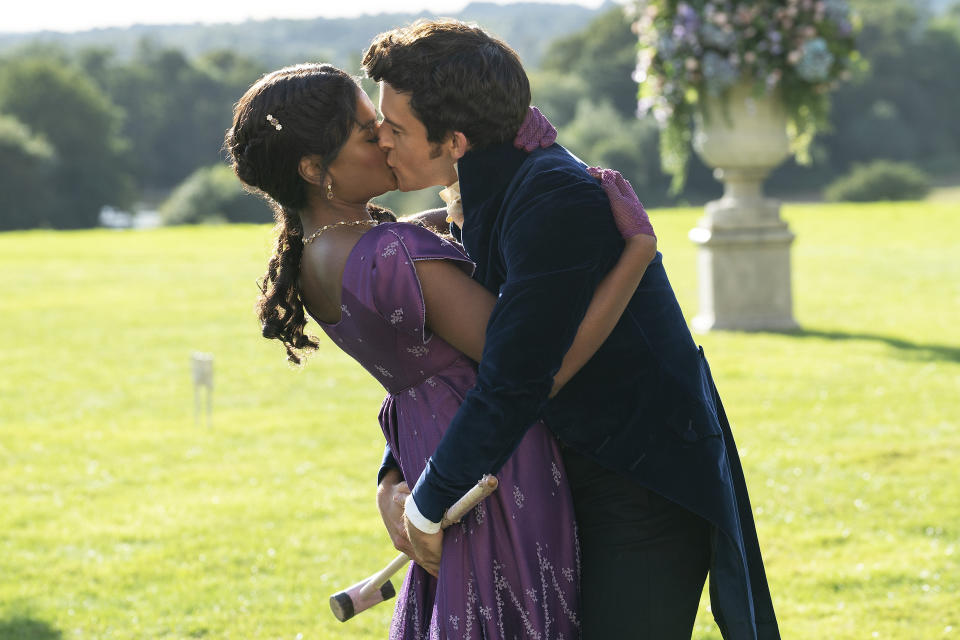Why Netflix Doesn’t License Its Own Content to Others

- Oops!Something went wrong.Please try again later.
- Oops!Something went wrong.Please try again later.
The instances in which Netflix has licensed a meh show and turned it into a hit are well-documented. The so-called “Netflix Effect” has perhaps never been more perfectly demonstrated than this summer with “Suits,” an old USA Network legal drama that spent a record 12 straight weeks as the no. 1 title across all of streaming, per Nielsen. (A few years ago, Netflix passed on the opportunity to make the upcoming “Suits” spinoff a Netflix original. Ah well, they’ll probably get it — and blow it up — later.)
Other legacy Hollywood studios have gotten the message, and the licensing (to Netflix) floodgates have opened. Not that Netflix is interested in returning the favor — and it doesn’t sound like that’s going to change anytime soon.
More from IndieWire
Netflix co-CEO Ted Sarandos said his platform’s “Suits” success can be attributed to “the combination of our large subscriber base and our recommendation system that knew to put ‘Suits’ in front of people who were going to love it the most.”
“That’s a reflection of what we do best,” he continued on a Tuesday conference call with the media. “I do not think that necessarily would happen in reverse — that other outlets would have a better chance finding more viewing for the programming that we have on Netflix, which is why we don’t do it.”
Fair enough. With membership nearing 250 million global subscribers as of September 30, who is bigger than Netflix? If you need an actual answer to that rhetorical question, here it is: Nobody.
Ted’s point is basically that any licensing revenue that could come in to Netflix by sending “Bridgerton” Season 1 (our example) to another platform would dwarf in the perceived value of keeping the series a Netflix exclusive. Same goes for his non-hits, we suppose.
Plus, Sarandos said, Netflix doesn’t have a sales team to facilitate such licensing (out, not in). Why start now?
“It is not part of our business plan,” he said. “But I do think that we can add tremendous value when we license content. I’m not positive that that’s reciprocal.”
Let’s keep in mind, this is the same guy who alongside former CEO Reed Hastings swore Netflix would never have commercials. We all know where that went. (Reed stepped down a few months after Netflix with ads launched in the U.S.)

Sarandos’ comments came during a Q&A with press about the company’s first semi-annual “engagement report,” which contained viewership statistics for more than 18,000 titles (originals and licensed) between January and June 2023. It included release dates for any show or film that is considered a Netflix original in at least one country. The data dump’s intention was to impress upon the reports readers just how much viewership happens on Netflix — well beyond its Top 10.
IndieWire sorted (and filtered) through the data, which contained at least one hidden find. Of the spreadsheet’s 18,214 entires, 13,359 — or 73.3 percent — of the titles were listed without a release date. That means of all the titles — new or old — viewed for more than 50,000 hours on Netflix over the first half of 2023, nearly three quarters of them were non-originals. That is a ton of licensed content. (Here we should point out that there are some outliers, like series that began as licensed content but became a Netflix original — think “Lucifer,” “Arrested Development,” and “Girls5eva.”)
That suggests a very different balance of original and licensed content than we thought. Reports in July 2023 had Netflix’s U.S. library made up of 55 percent originals — up from 50 percent a year earlier. There are a few asterisks.
First, the July balance is just the U.S.; Netflix’s report was global. The new data also represents a snapshot for one point in time and omits anything that was viewed for fewer than 50,000 hours. (Counterpoint: the sample size is enormous.) Netflix has also been licensing more lately as a result of the writers and actors strikes delaying production. Brace yourself for the next report potentially leaning even more heavily on non-original titles.
When reached by IndieWire, Netflix reps weren’t really interested in parsing the data to that granular of a degree. On the conference call, VP of strategy and analysis Lauren Smith said 55 percent of January-June viewing came from Netflix originals, leaving 45 percent from licensed content.
Best of IndieWire
The Best LGBTQ Movies and TV Shows Streaming on Netflix Right Now
Guillermo del Toro's Favorite Movies: 54 Films the Director Wants You to See
Nicolas Winding Refn's Favorite Films: 37 Movies the Director Wants You to See
Sign up for Indiewire's Newsletter. For the latest news, follow us on Facebook, Twitter, and Instagram.

